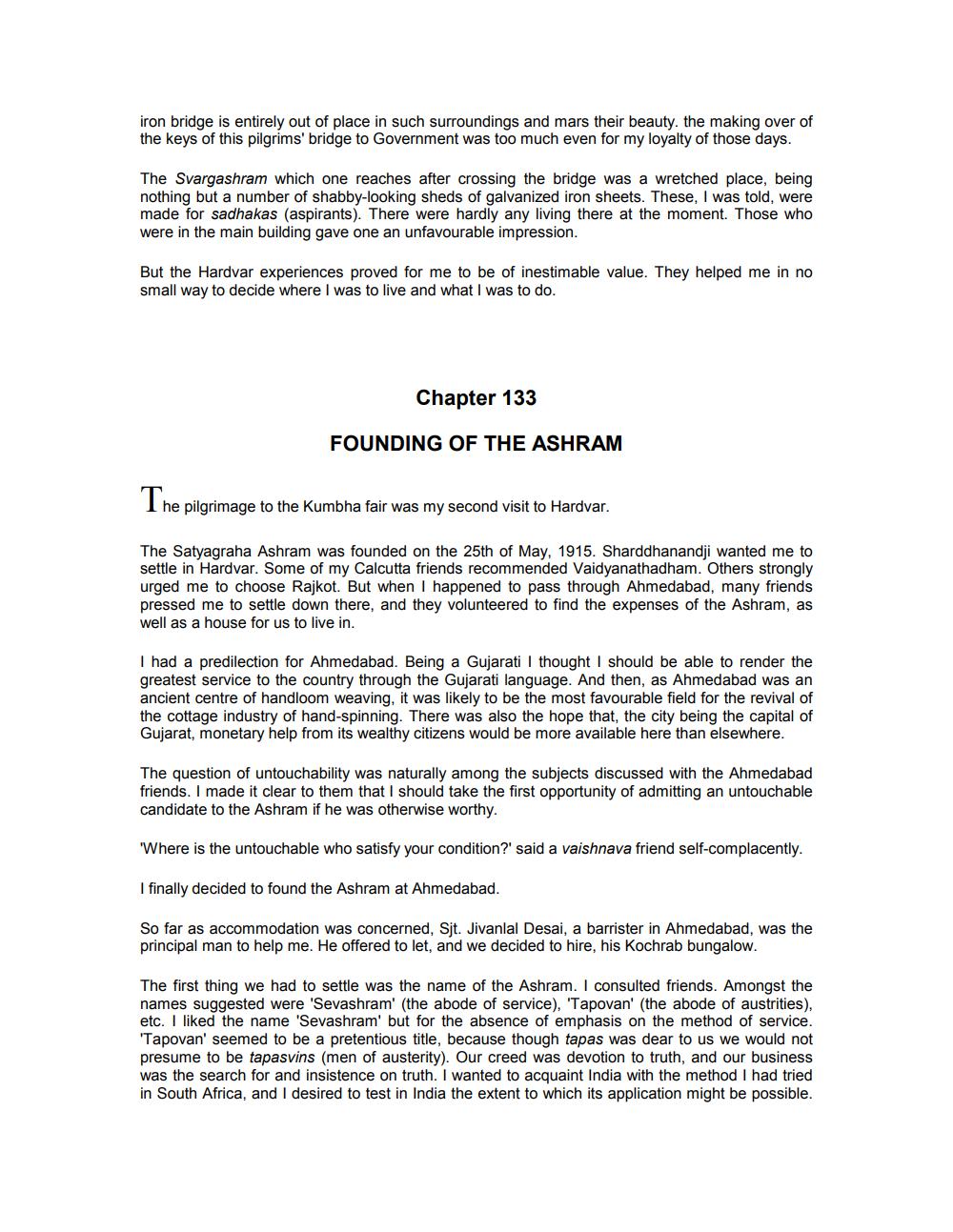________________
iron bridge is entirely out of place in such surroundings and mars their beauty. the making over of the keys of this pilgrims' bridge to Government was too much even for my loyalty of those days.
The Svargashram which one reaches after crossing the bridge was a wretched place, being nothing but a number of shabby-looking sheds of galvanized iron sheets. These, I was told, were made for sadhakas (aspirants). There were hardly any living there at the moment. Those who were in the main building gave one an unfavourable impression.
But the Hardvar experiences proved for me to be of inestimable value. They helped me in no small way to decide where I was to live and what I was to do.
Chapter 133
FOUNDING OF THE ASHRAM
I he pilgrimage to the Kumbha fair was my second visit to Hardvar.
The Satyagraha Ashram was founded on the 25th of May, 1915. Sharddhanandji wanted me to settle in Hardvar. Some of my Calcutta friends recommended Vaidyanathadham. Others strongly urged me to choose Rajkot. But when I happened to pass through Ahmedabad, many friends pressed me to settle down there, and they volunteered to find the expenses of the Ashram, as well as a house for us to live in.
I had a predilection for Ahmedabad. Being a Gujarati I thought I should be able to render the greatest service to the country through the Gujarati language. And then, as Ahmedabad was an ancient centre of handloom weaving, it was likely to be the most favourable field for the revival of the cottage industry of hand-spinning. There was also the hope that, the city being the capital of Gujarat, monetary help from its wealthy citizens would be more available here than elsewhere.
The question of untouchability was naturally among the subjects discussed with the Ahmedabad friends. I made it clear to them that I should take the first opportunity of admitting an untouchable candidate to the Ashram if he was otherwise worthy.
'Where is the untouchable who satisfy your condition?' said a vaishnava friend self-complacently.
I finally decided to found the Ashram at Ahmedabad.
So far as accommodation was concerned, Sjt. Jivanlal Desai, a barrister in Ahmedabad, was the principal man to help me. He offered to let, and we decided to hire, his Kochrab bungalow.
The first thing we had to settle was the name of the Ashram. I consulted friends. Amongst the names suggested were 'Sevashram' (the abode of service), 'Tapovan' (the abode of austrities), etc. I liked the name 'Sevashram' but for the absence of emphasis on the method of service. 'Tapovan' seemed to be a pretentious title, because though tapas was dear to us we would not presume to be tapasvins (men of austerity). Our creed was devotion to truth, and our business was the search for and insistence on truth. I wanted to acquaint India with the method I had tried in South Africa, and I desired to test in India the extent to which its application might be possible.




